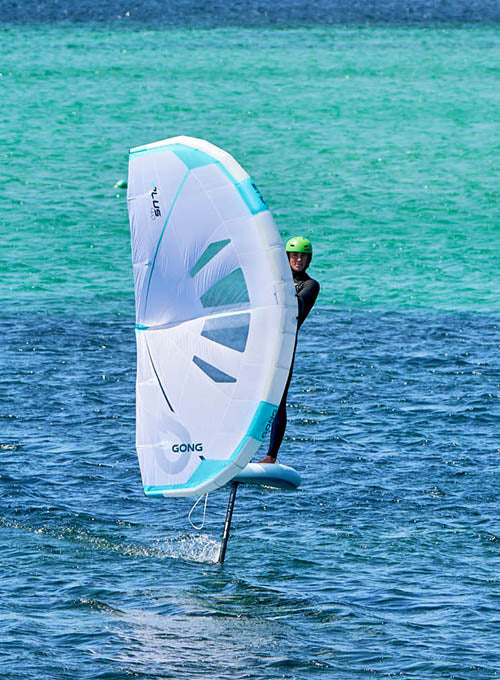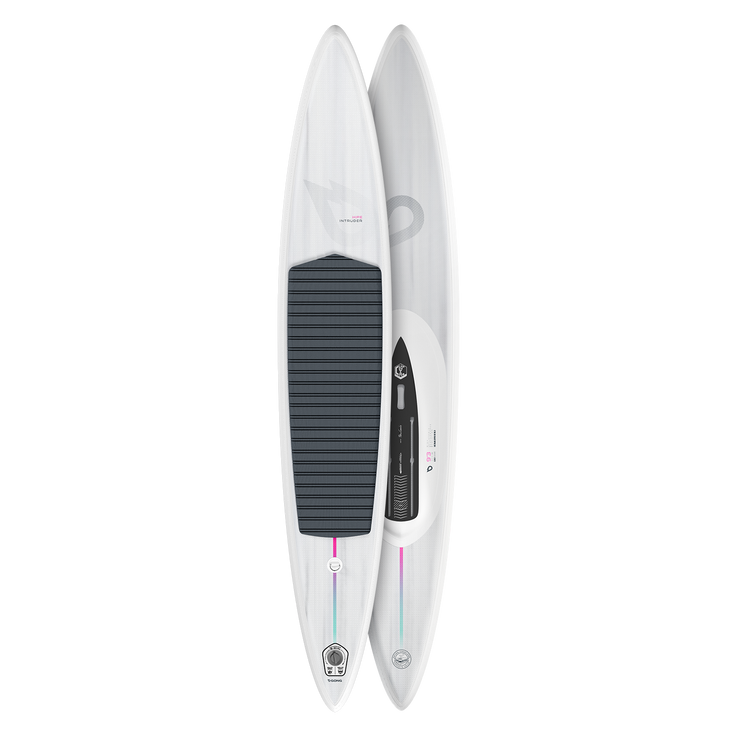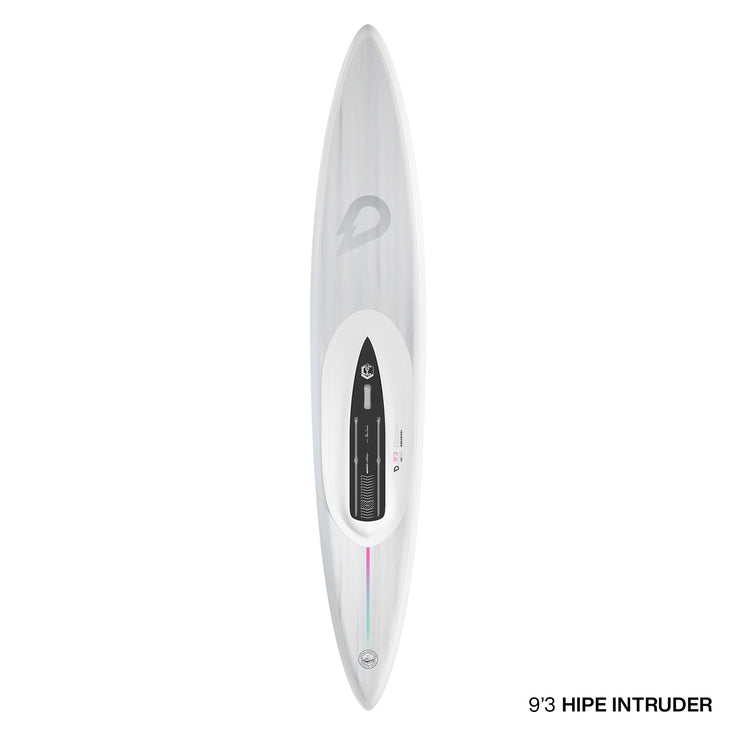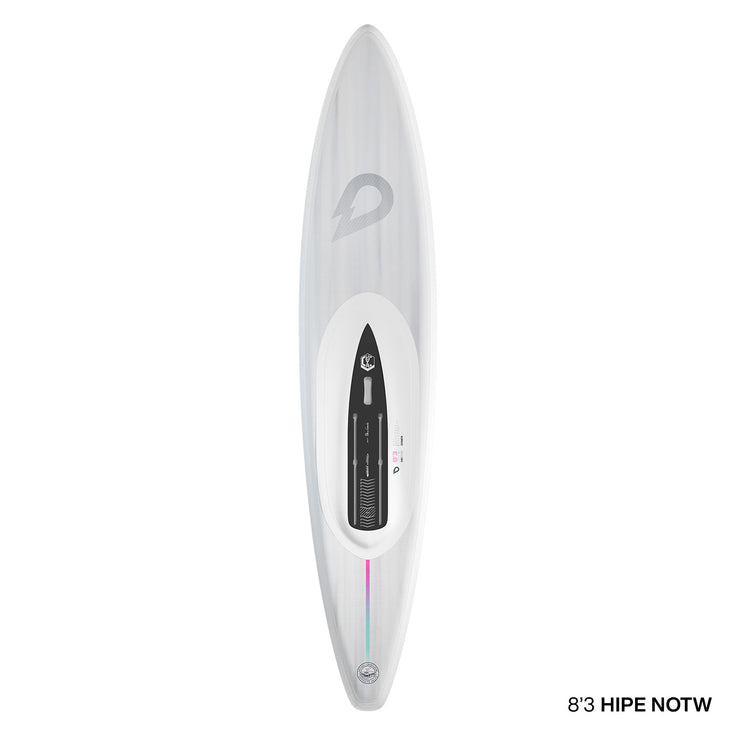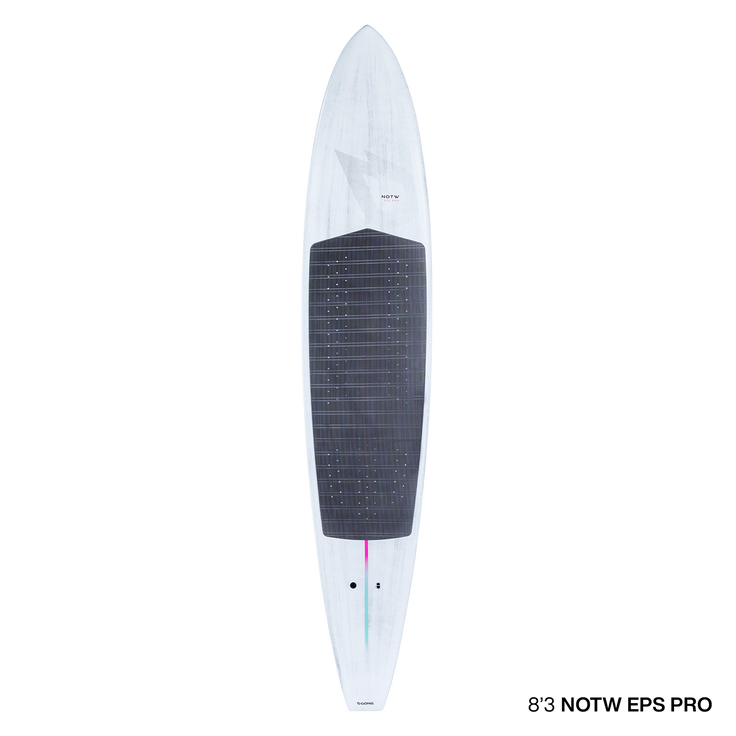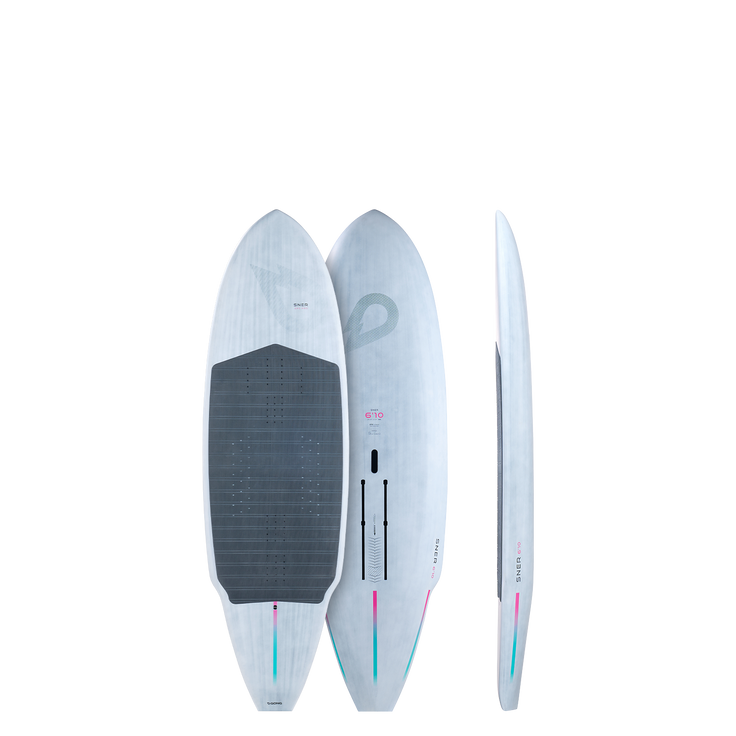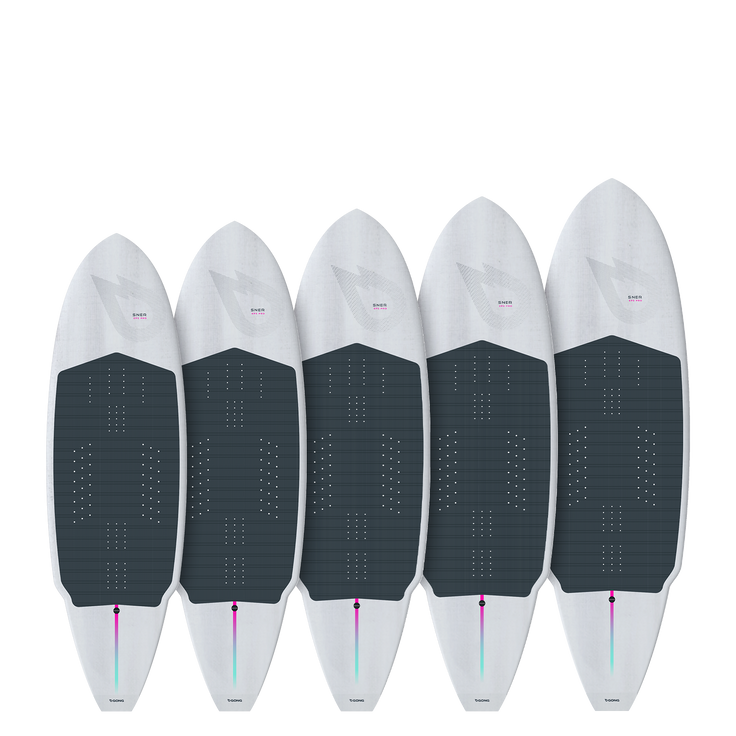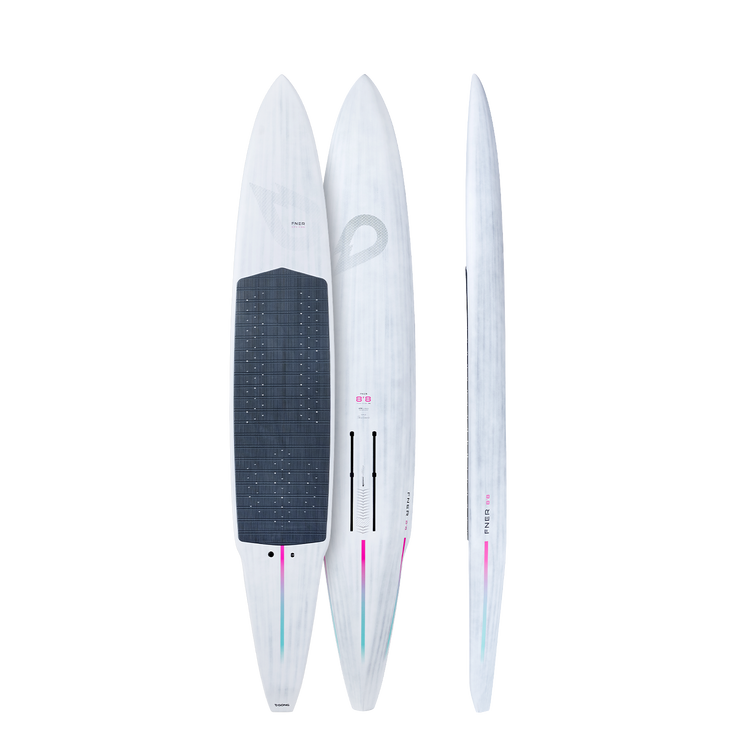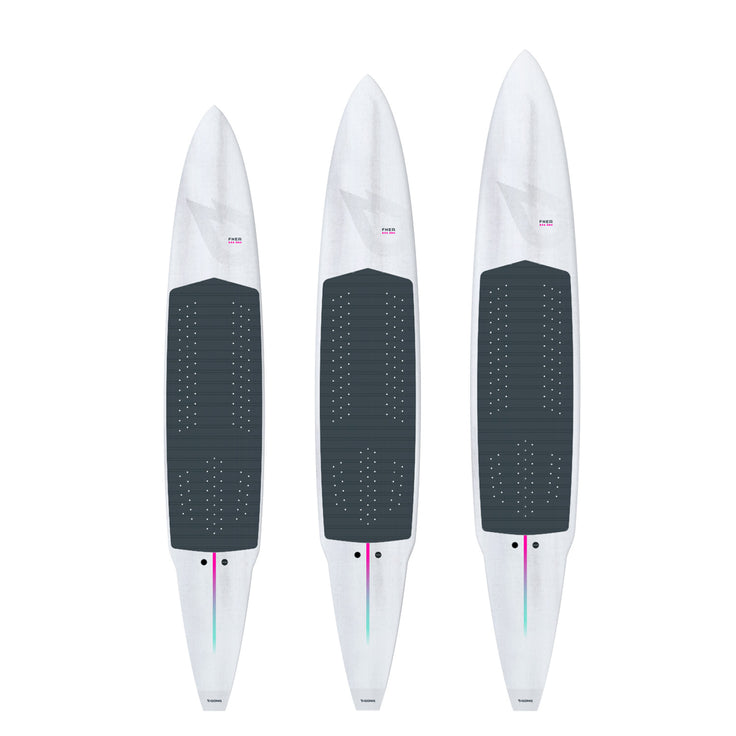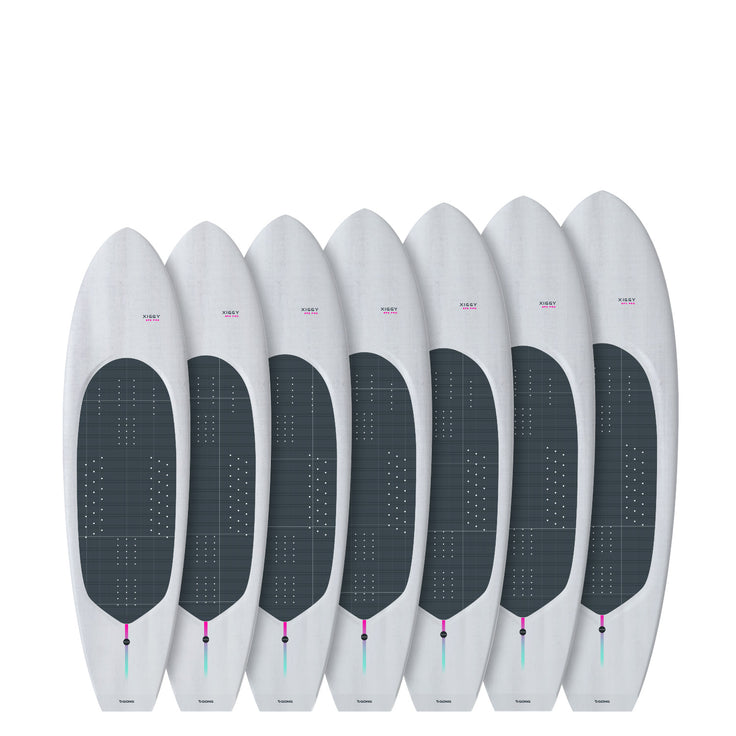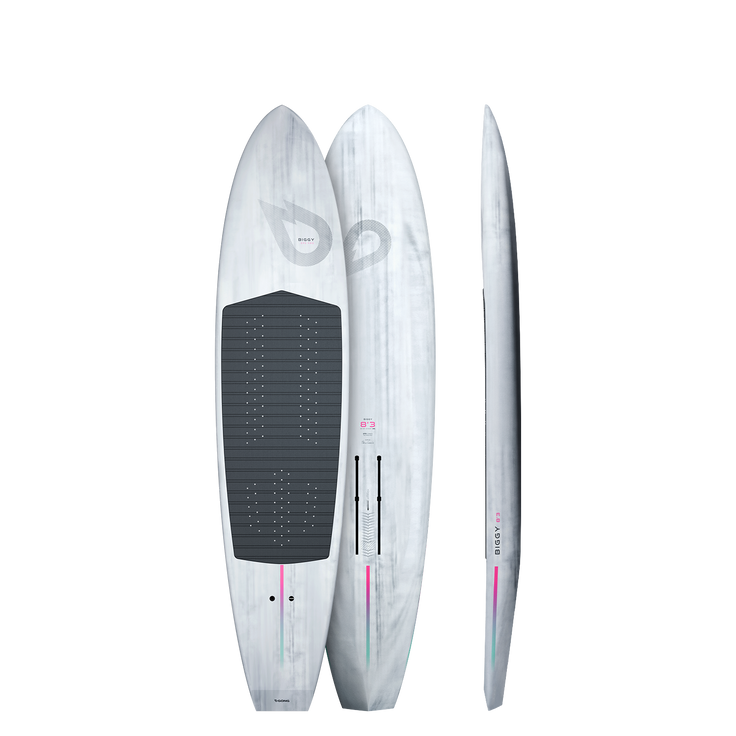GEAR: RIGID OR INFLATABLE DOWNWIND SUP FOIL BOARD?
- News
- SUP foil
Should you choose an Intruder or a HIPE Intruder? A NOTW or a HIPE NOTW?
Thanks to our unparalleled expertise in inflatable technology, with tens of thousands of users worldwide in both wing foiling and SUP, transforming our SUP Foil Downwind shapes into inflatable versions moved quickly from concept to development to technical validation.
From this know-how were born the HIPE NOTW and HIPE Intruder. Like our Pro range HIPEs, they fully meet their dual objectives: performance and practicality.
So, should you go with a rigid or inflatable board?
 SUP Foiler: Mathieu, GONG team rider, riding an Intruder EPS Pro with a Carbon Pro paddle.
SUP Foiler: Mathieu, GONG team rider, riding an Intruder EPS Pro with a Carbon Pro paddle.
1. Take-off performance
The key strength of SUP Foil Downwind boards at take-off is their glide. Their narrow and elongated shapes allow them to slide effortlessly on the water, requiring very little energy to accelerate.
In this regard, inflatable and rigid boards have similar performance because it's primarily the extreme ratio of length to narrow width that lifts you off the water.
Whether you're accelerating with a paddle or using a wing in light wind, both technologies are nearly equally effective.
That said, rigid boards with more pronounced kick tails offer a slight advantage during the lift-off phase.
2. Stability when not flying
Here again, board length and foil wingspan are the main contributors to stability. Whether rigid or inflatable, it's the foil size that determines how stable you are.
Note: the rails of downwind SUP foil boards are rounded at the hull to offer better forgiveness on touchdowns, putting rigid and inflatable boards on equal footing.
However, the straight sidewalls of rigid boards do provide extra comfort and stability when not on the foil.
 SUP Foiler: Mathieu, GONG team rider, riding a HIPE Intruder with a Carbon Pro paddle.
SUP Foiler: Mathieu, GONG team rider, riding a HIPE Intruder with a Carbon Pro paddle.
3. On the foil feeling
Once airborne, both technologies have comparable inertia. For the same volume, the board weight is similar.
And what about inflatable rigidity? Thanks to our innovative Woven Dropstitch construction and high-end ICS Full Composite Prepreg plate, our inflatable Downwind SUP Foil boards are extremely rigid.
When pumping, the performance difference is imperceptible for most riders. Responsiveness is instant for total control.
Where there is a difference is in refined shaping, especially the tail, which is forgiving on touchdowns and enables instant repops thanks to its kick tail.
 SUP Foiler: Mathieu, GONG team rider, riding an Intruder EPS Pro with a Carbon Pro paddle.
SUP Foiler: Mathieu, GONG team rider, riding an Intruder EPS Pro with a Carbon Pro paddle.
4. Durability and Maintenance
In theory, it’s a tie. A well-maintained board will be just as durable, whether it's built with inflatable or rigid technology.
However, it’s important to consider daily use. Paddle strikes, contact with the ground when handling a board over 8 feet long… even when being careful, nasty surprises can happen quickly.
In this area, the advantage goes to the inflatable boards, which withstands all the small everyday hits without flinching, whether on land or on the water.
And if, unfortunately, a sharp object causes a leak, you’re self-sufficient for repairs (PVC patch or Zero Flat).
A full repair of a rigid board is no more problematic, but it does require specific know-how or calling on a professional repairer.
5. Transport and Storage
The main reason for creating the HIPE Intruder and NOTW is the bulkiness of 7- to 9-foot boards. Inflatable versions are a game changer—they fit into a wheeled backpack, with room for your foil and wetsuit.
Thanks to the HIPE range, you don’t need a large garage or special vehicle. No more surprises when opening your board bag after a flight. Traveling with a HIPE board means peace of mind.
 SUP foiler: Mathieu, GONG team rider, with a HIPE NOTW, a Carbon Pro paddle and a Trail L.
SUP foiler: Mathieu, GONG team rider, with a HIPE NOTW, a Carbon Pro paddle and a Trail L.
6. Price
Inflatable boards are less expensive to produce because they require less labor. Composite board construction involves multiple steps—especially vacuum processes to optimize weight and strength—that drive up labor time and cost.
This results in a 15–25% price advantage for inflatable boards, which we pass on to you in our shop, backed by our direct-to-consumer pricing model.
Explore our complete range of Downwind SUP Foil boards.


